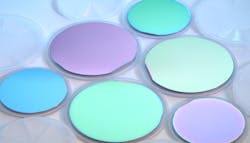Vigo System division to offer III-V epitaxial structures for photonics applications
In response to growing global market demand, Vigo System (Warsaw, Poland), a partner of Boston Electronics (Brookline, MA), has established its Epitaxy Division (ENT) to provide industry with foundry production of III-V compound semiconductor epitaxial structures for photonic and microelectronic applications. ENT’s services are available as a merchant foundry to industry and researchers to provide both prototype and production fabrication of devices.
ENT produces high-grade III-V compound semiconductor epitaxial structures for photonic devices and microelectronic devices; examples of products being fabricated at ENT include:
- Quantum-cascade laser (QCL) diodes (3.5–20 μm) for spectroscopic applications such as remote sensing, security, vehicular cruise control, collision avoidance radar, industrial process control, medical diagnostics, breath analyzers, and identification and quantifications of complex heavy molecules found in toxic chemicals, explosives, and drugs
- Vertical-cavity surface-emitting lasers (VCSELs) used in communication systems, lidar, printers, time-of-flight sensors, autonomous vehicles, robots, and drones
- Shortwave-infrared (SWIR) photodetectors based on metal-organic chemical vapor deposition (MOCVD) compound semiconductors such as indium gallium arsenide (InGaAs)
Vigo System’s ENT epi-wafer offerings can be produced both in large volumes as well as in small test batches, according to Adam Piotrowski, Vigo System’s CEO.
For more information, please visit ent-epitaxy.com or boselec.com.
Source: Boston Electronics press release – November 2, 2020
